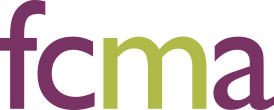Getting Inside the Dance
An Interview with Julie Casson Rubin, GCFT
Dancers experience many different approaches of learning movement. How would you describe the Feldenkrais Method?
Well, for example, if over many, many years I as a dancer have developed a way of using my upper body where I hold a lot of excessive or unnecessary contraction and tension in my chest and upper arms, through doing Feldenkrais classes I not only become aware much more accurately of the tension and how I hold myself but I am able to experience a way of moving, a way of using that part of my body that does not bring in that unnecessary tension so that all of my movement becomes more efficient and enjoyable to do. Through doing the Feldenkrais lessons we spontaneously become aware of habitual uses of our selves that may have inhibited us from really moving in the most graceful, efficient way we could.
Regarding dance injuries and the role of the Feldenkrais Method in the management of injuries in dance. I think in general the more demanding the choreography or demanding the movement, the more demanding it is of the dancer to increase their awareness of themselves. There is a growing feeling in the dance community that dancers are no longer willing to throw their bodies away to suffer with unnecessary pain. One of the things that we have noticed with students who are dancers is when they are in a period of dealing with an acute injury and they really need to rest from dance that the Feldenkrais lessons give the dancers another vocabulary of movement. It gives them a way of moving that is safe while they are recovering.
How does the Feldenkrais Method enhance the creativity potential of making dances? How does it affect choreography?
In speaking with dancers who have completed Feldenkrais training and are now dancers and Feldenkrais Practitioners and choreographers, they have shared with me a sense of being able to get inside a kind of continuum of movement in their choreography to develop a piece within a piece. They find that the Feldenkrais Method has offered them a kind of grid, a way of exploring movement and a sense of their own curiosity of movement deepening so they have an overall enriched feeling for the dance, for movement. In doing the Feldenkrais lessons we develop a much deeper kind of internal feeling for movement so that in choreography this internal feeling begins to guide the process of developing a dance so that we rely less and less on external pictures or external images.
In the creative process in general I think that the Feldenkrais Method has an impact on our ability to break out of constraints in our thinking so that when we continually are breaking free of habitual restrictions, habitual patterns of thinking, habitual patterns of movement, the creative process is inevitably opened up and enriched.
Selections reprinted from an interview published in the Western Australia Journal of Dance.
